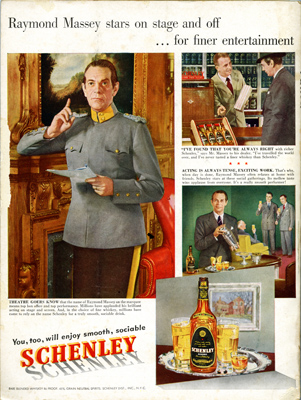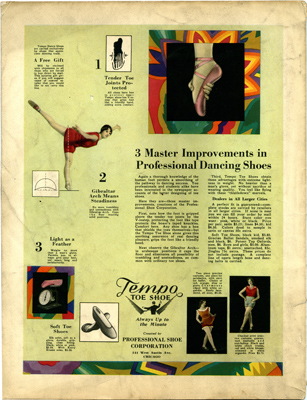Once again, we Americans are in love with our recent past. F or several decades, we’ve been recycling the fashions of our parents. (Even, yes, the fashions of the 1980s.) And for about that long, we’ve been fascinated by—even obsessed with—the horrors of World War II. But the advent in 2007 of the television show Mad Men has opened up another side to mid-century U.S. culture: the somewhat less honorable exploits of our advertising industry. Advertising is a direct expression of what may be our greatest national talent, selling stuff. It only makes sense that advertising in the twentieth century—the “American” century—goes to the heart of where we have been and who we are.
or several decades, we’ve been recycling the fashions of our parents. (Even, yes, the fashions of the 1980s.) And for about that long, we’ve been fascinated by—even obsessed with—the horrors of World War II. But the advent in 2007 of the television show Mad Men has opened up another side to mid-century U.S. culture: the somewhat less honorable exploits of our advertising industry. Advertising is a direct expression of what may be our greatest national talent, selling stuff. It only makes sense that advertising in the twentieth century—the “American” century—goes to the heart of where we have been and who we are.
If you’re a Mad Men devoté, you may also be a fan of related cultural phenomena like “mid-century modern” furniture, Betty Crocker cookbooks, tunic tops and tiered skirts. While the library does not collect the actual chairs, cakes or pantsuits made and advertised in the mid 20th century (sorry!), we have been active collectors of a significant set of mid-century products: books and magazines. Popular magazines are particularly rich vehicles of cultural history because of the medium’s tight entanglements between what we now call “content” (articles, stories, illustrations) and what we could call “context” (ads, graphic design)—but of course the way you define “content” depends on what you’re looking for. In any case, popular magazines often blur these distinctions: ads for clothing are positioned next to fashion spreads that feature the same kind of clothing that’s in the ads.
Two ![Carl Link, [portrait of Helba Huara]. The Dance, February 1929.](http://blogs.wpshared.library.jhu.edu/wp-content/uploads/sites/23/2011/10/dance-mag-feb-1929-front2.jpg) recent acquisitions nicely demonstrate this state of affairs: several beautiful issues of The Dance from the 1920s and ’30s and a complete run of the delicious fashion magazine Flair from 1950-1951. The Dance was started as The American Dancer in 1927 and is still published as Dance Magazine today. From the beginning, it covered many kinds of dance—ballet, ballroom, “stage and screen,” folk and ethnic forms, the emerging paradigm of “modern” dance, even acrobatics—which was a wise move in ter
recent acquisitions nicely demonstrate this state of affairs: several beautiful issues of The Dance from the 1920s and ’30s and a complete run of the delicious fashion magazine Flair from 1950-1951. The Dance was started as The American Dancer in 1927 and is still published as Dance Magazine today. From the beginning, it covered many kinds of dance—ballet, ballroom, “stage and screen,” folk and ethnic forms, the emerging paradigm of “modern” dance, even acrobatics—which was a wise move in ter ms of financial sustainability. The ads in The Dance reveal how the magazine served as a trading post for dance students seeking teachers and schools seeking pupils, shoe and costume suppliers, weight loss programs, beauty products, musical recording companies and hotels (performers often have to travel). Because the magazine’s readership drew from so many dance forms, it was attractive to a wide variety of advertisers.
ms of financial sustainability. The ads in The Dance reveal how the magazine served as a trading post for dance students seeking teachers and schools seeking pupils, shoe and costume suppliers, weight loss programs, beauty products, musical recording companies and hotels (performers often have to travel). Because the magazine’s readership drew from so many dance forms, it was attractive to a wide variety of advertisers.
F![Sylvia Braverman, [interpretation of the Flair rose]. Flair, May 1950.](http://blogs.wpshared.library.jhu.edu/wp-content/uploads/sites/23/2011/10/flair-mag-may-1950-front2.jpg) lair offers a counter example. It was a sophisticated, even intellectual fashion magazine with quality production values and an erudite sensibility. Edited by Fleur Cowles—her third husband’s media company backed Flair—it brought fashion into the high-culture arena of art, literature, travel and politics. Eschewing the homogenized branding that generally ruled popular magazine production, Flair was literally a different magazine from issue to issue: there were changing mastheads and paper stocks, and many issues featured special inserts, fold-outs and other adventurous tidbits. The May 1950 issue, for instance, has a cut-out on the front cover (the woman’s face appears through a die-cut hole), several half-pages (producing an overlay on the page beneath), imaginative photographic lay-outs, and a bound-in pamphlet with an essay by the writer Katherine Anne Porter. The whole issue is thematically focused on the topic of roses. One thing you do not see a lot of in Flair: ads, which would have interrupted the artistic integrity of the issue. Most ads were segregated to the first few pages (a holdover practice from an earlier era of magazine production) or the back cover. Flair could have made up for this loss of advertising revenue with a high cover price, but as a new title, that would have hampered its ability to enter the marketplace of cheaper magazines. Flair lasted about two years.
lair offers a counter example. It was a sophisticated, even intellectual fashion magazine with quality production values and an erudite sensibility. Edited by Fleur Cowles—her third husband’s media company backed Flair—it brought fashion into the high-culture arena of art, literature, travel and politics. Eschewing the homogenized branding that generally ruled popular magazine production, Flair was literally a different magazine from issue to issue: there were changing mastheads and paper stocks, and many issues featured special inserts, fold-outs and other adventurous tidbits. The May 1950 issue, for instance, has a cut-out on the front cover (the woman’s face appears through a die-cut hole), several half-pages (producing an overlay on the page beneath), imaginative photographic lay-outs, and a bound-in pamphlet with an essay by the writer Katherine Anne Porter. The whole issue is thematically focused on the topic of roses. One thing you do not see a lot of in Flair: ads, which would have interrupted the artistic integrity of the issue. Most ads were segregated to the first few pages (a holdover practice from an earlier era of magazine production) or the back cover. Flair could have made up for this loss of advertising revenue with a high cover price, but as a new title, that would have hampered its ability to enter the marketplace of cheaper magazines. Flair lasted about two years.
These new acquisitions are so fresh, they haven’t been fully cataloged yet. Check in with us in the Rare Books and Manuscripts department if you want to see them. And if you need a mid-century fix while you’re waiting, watch some tv.

Thank you for the great post. I enjoyed reading it!